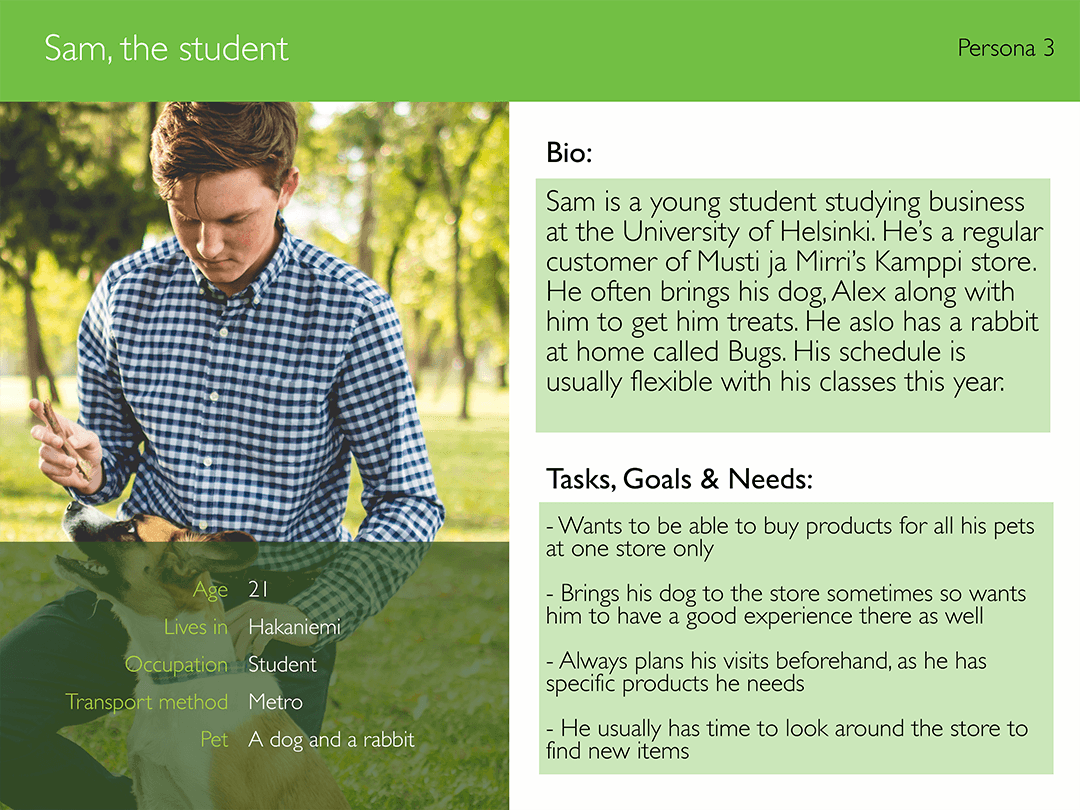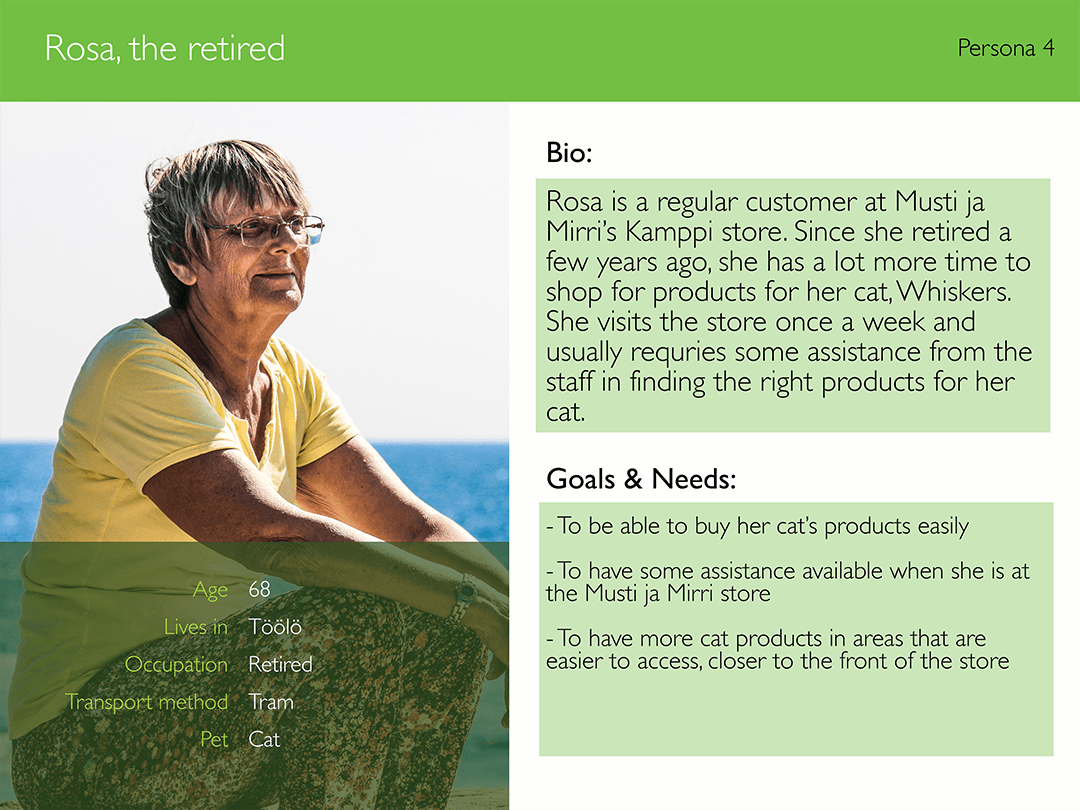Musti Ja Mirri – User-Centered Methods
September – December 2018

This project explored the pet’s goods store Musti ja Mirri in Kamppi, near the metro station through methods employed to conduct a customer scene investigation. The goal of our customer scene investigation was to find out possible problem areas in the customer experience.
The Challenge:
We were to investigate a location related to public transportation, so the focus of our research was to examine how the central location of the Kamppi store affects the customer experience. From there, we were also tasked with recommending initial solutions to the problems found.
My Role(s):
– Helping create material for user interviews
– Facilitating
– Developing personas and scenarios
– Generating user journeys
– Ideation of possible solutions with the team
Tools & Methods Used:
– Short Customer Interviews, Staff Interviews
– Generating insights and affinity mapping
– Persona and Scenario Creation
– Customer Journey and Pain point mapping
The Process:
User Research and Quantitative Analysis:
We began the investigation with customer interviews. We conducted our interviews in two phases. In the first phase we interviewed 20 customers and 3 members of the staff, with the goal to gain insight on what the possible problem areas in the user experience could be. After getting feedback on the initial findings from the course staff, we revised our questions and interviewed 33 customers.
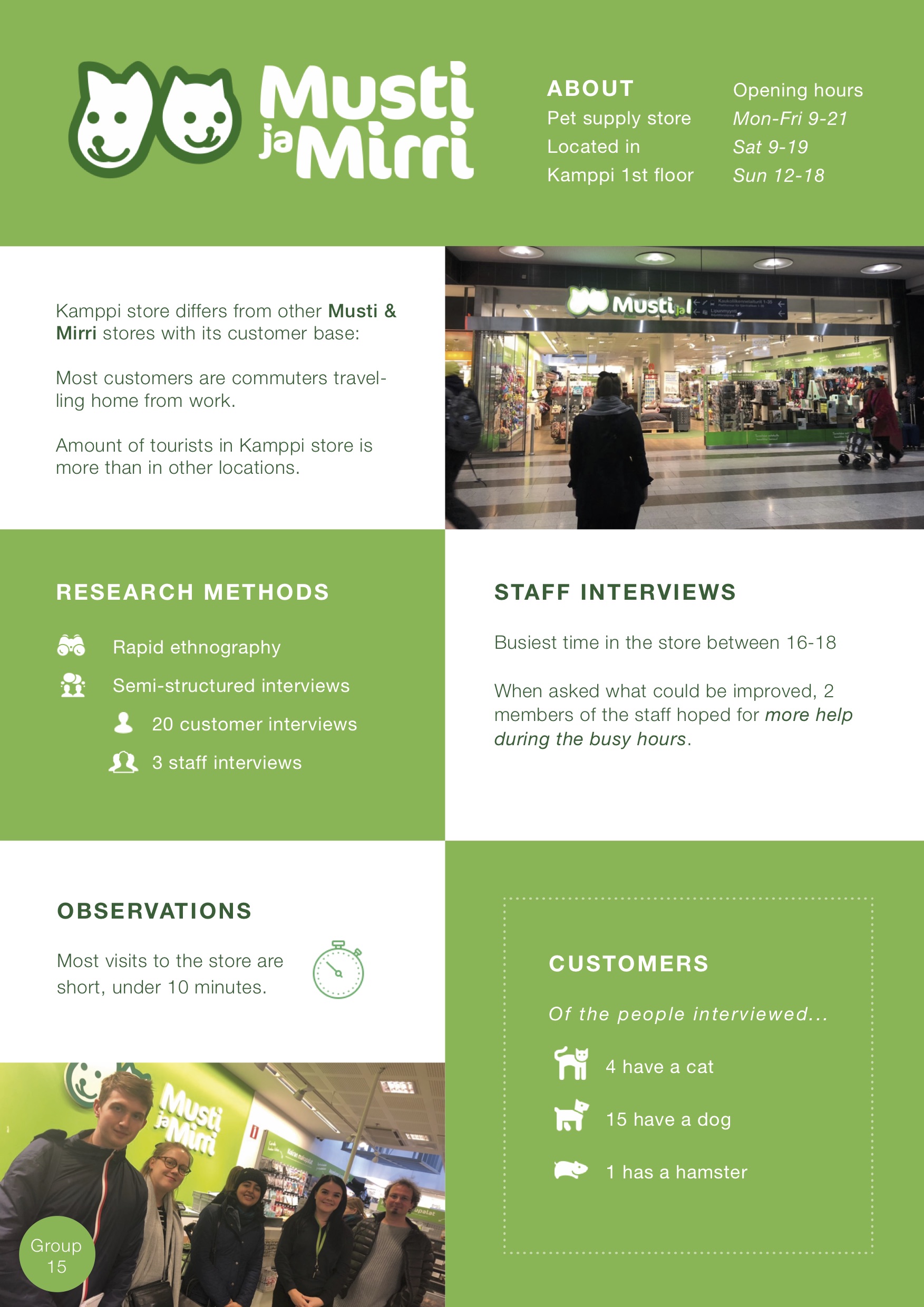
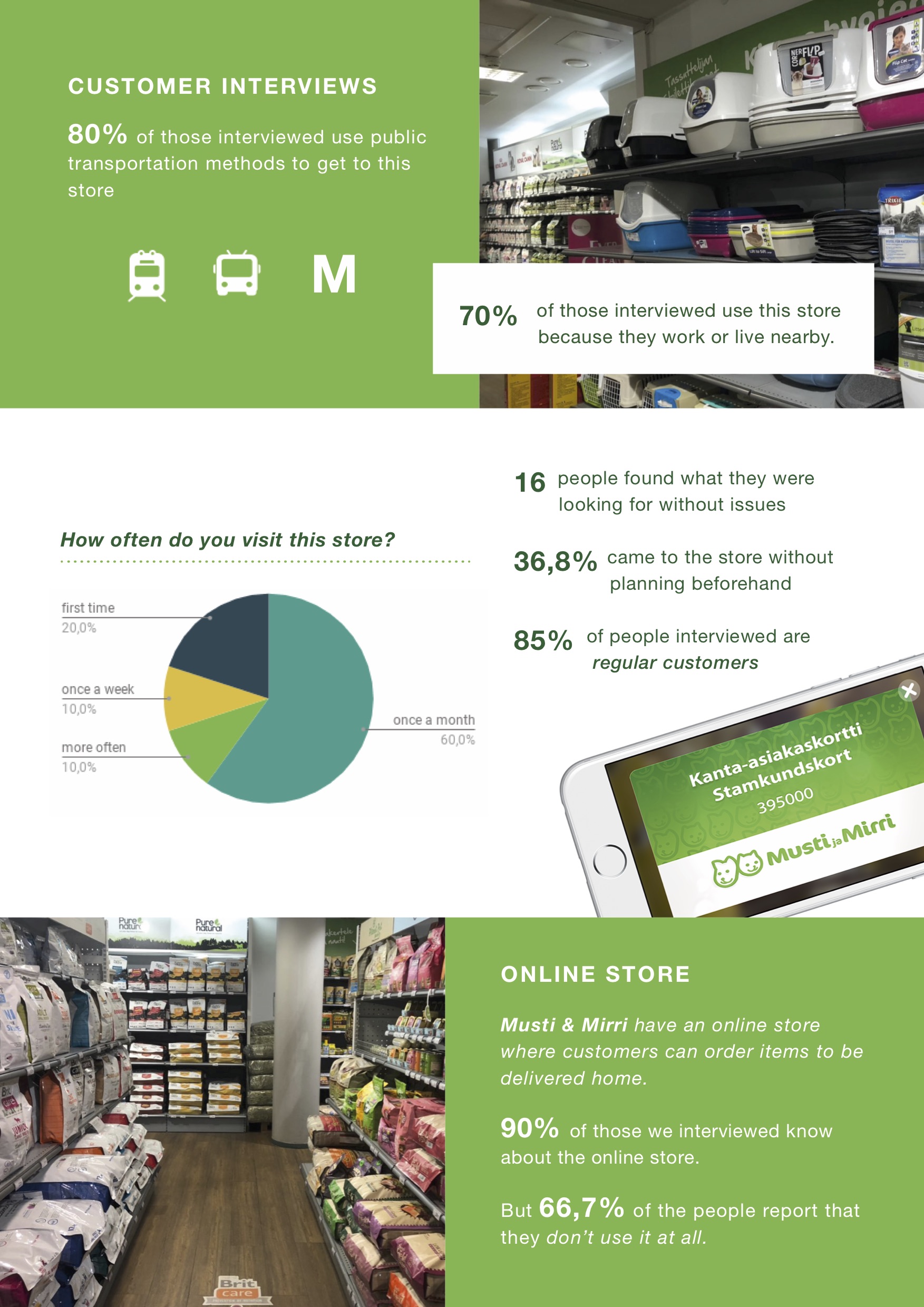
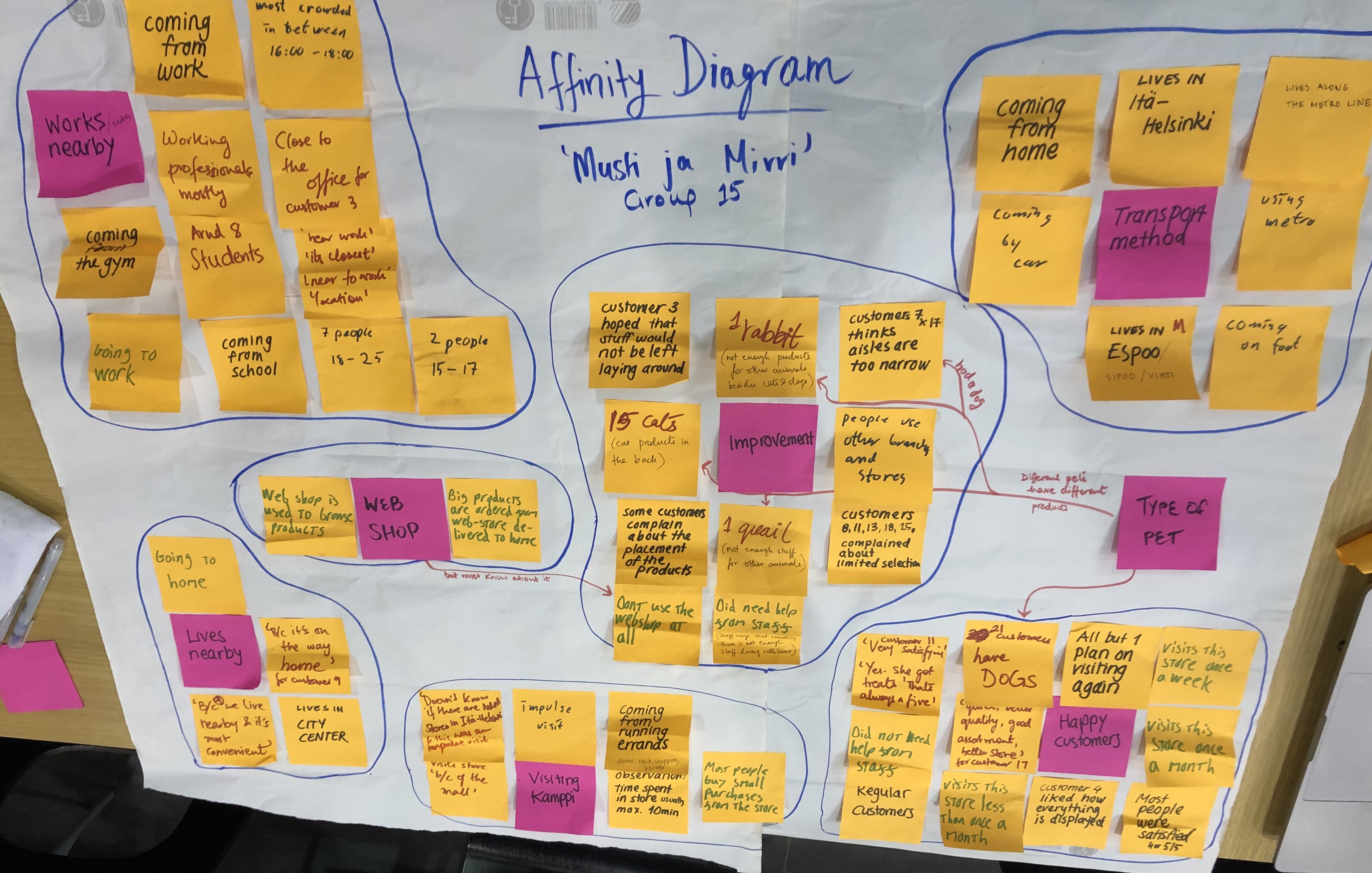
These second set of questions were divided to three parts: questions about the customer, about the transportation methods, about the online store, and about customer satisfaction. From there we went through some brainstorming and mapping sessions to highlight problems found.
Our main interest was in understanding how and why customers would visit the store.
Main Insights:
– The location of the store is important, since most of the customers visit it on their commute to or from work.
– Customers tend to make impulse visits to the store, because the location at Kamppi mall is easily accessible by transport.
– The metro was the most popular method of commuting in our sample, and customers which live along the metroline are mostly likely to come by metro. Customers also visit this store on foot from work, school, home or from another events nearby.
– Most customers were satisfied with the service they received. The happy customers can also be linked to the finding that most of the customers are planning to visit the store again.
– We can link the type of pet to the happiness, as e.g. most of the customers have a dog. Cat owners are still happy, but most of the cat products are in the back. Other type of pets, like rodents or birds are largely underrepresented.
– As most customers come to the store and browse for items during rush hours, it can get time-consuming.
– This is further exacerbated by the lack of staff available to handle many customers – which we learnt during the staff interviews. One customer (during our research phase observations) left dissatisfied, as he could not find a free staff member to help him.
– In our interviews, we also found it interesting that most customers knew about the online store but did not use it. The lack of use of the web store could also be because public transport makes it very easy to visit this store during the commutes of most customers.
Personas:
After gathering some insights from the second phase of interviews, we were now able to build some personas about the type of users invovled in the scenarios here. We created personas based on the most commonly occuring groups of customers or the store as well as one of the staff as it helped highlight one of the early problems of rush hour slots we were starting to see.
Four personas modelled on user research ( click through to see the next persona)
Customer Journey Map, Touch & Pain Points:
Using these personas to guid user journeys, we generated task flows to mimic a persona’s process at the Musti ja Mirri store when they would visit based on their own personal motivations. Due to this, each persona’s pain points became easier to identify as seen in the journey map shown.
We could see that rush-hour problem made it difficult for customers who were trying to get back home fast to quickly buy their regular product. At the same time, other customers like Rosa who needed staff assistance were neglected. We could also customers who had other uncommon pets needed to go to a different store as well instead to get tailored products.
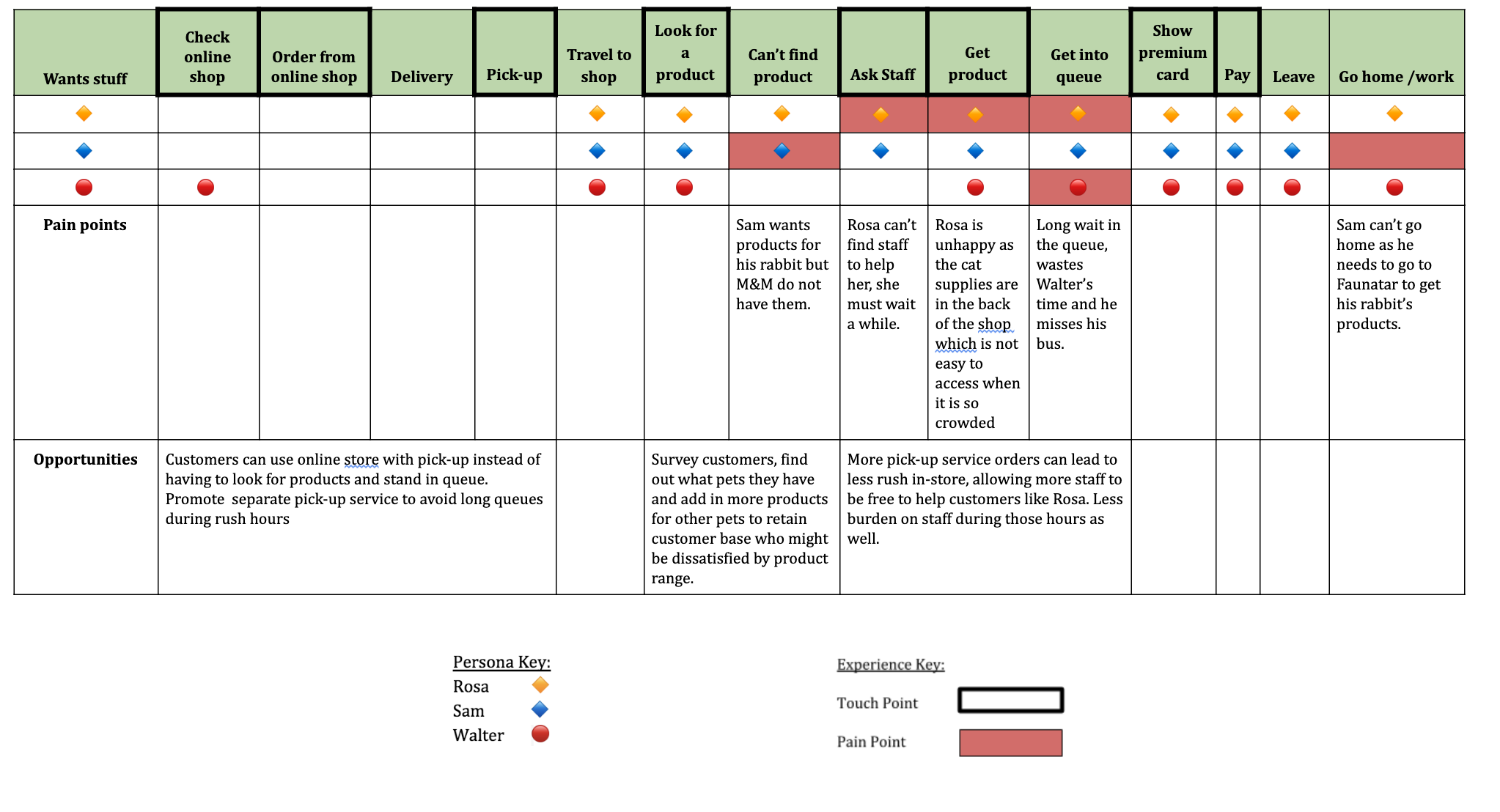
Customer Journey Map using the 3 customer personas
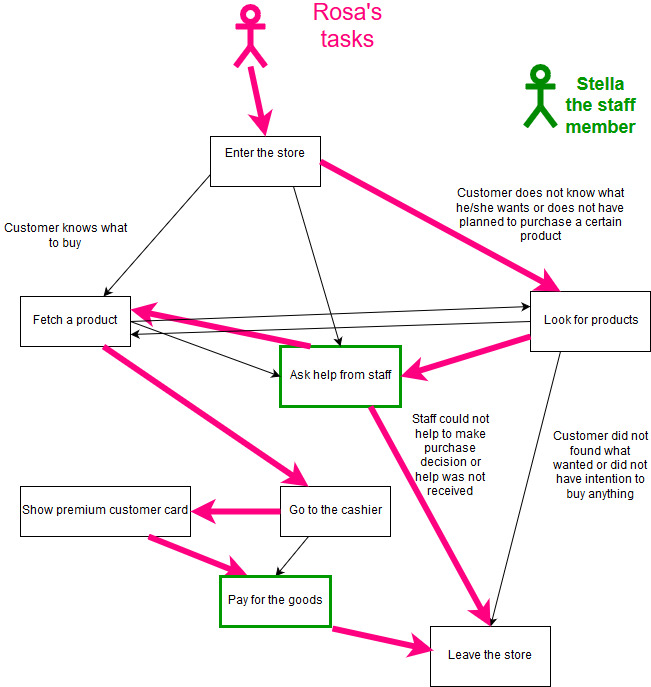
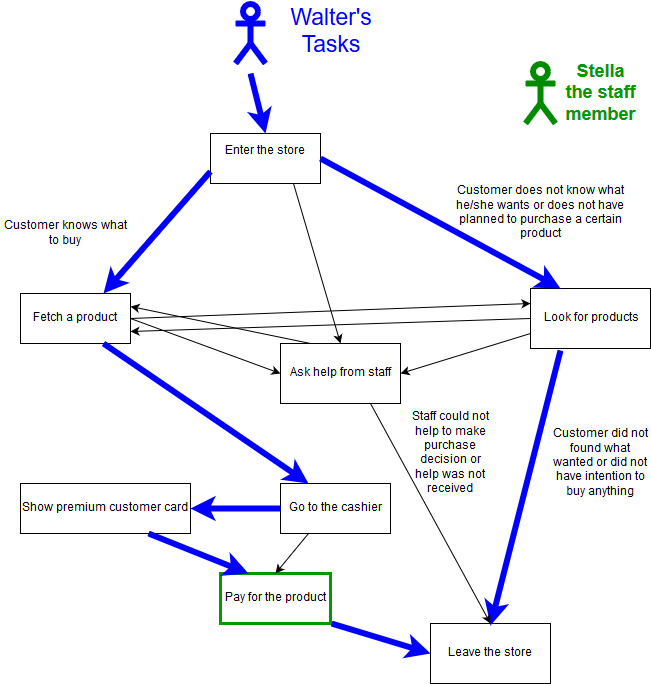
User tasks defined for the 3 customer personas
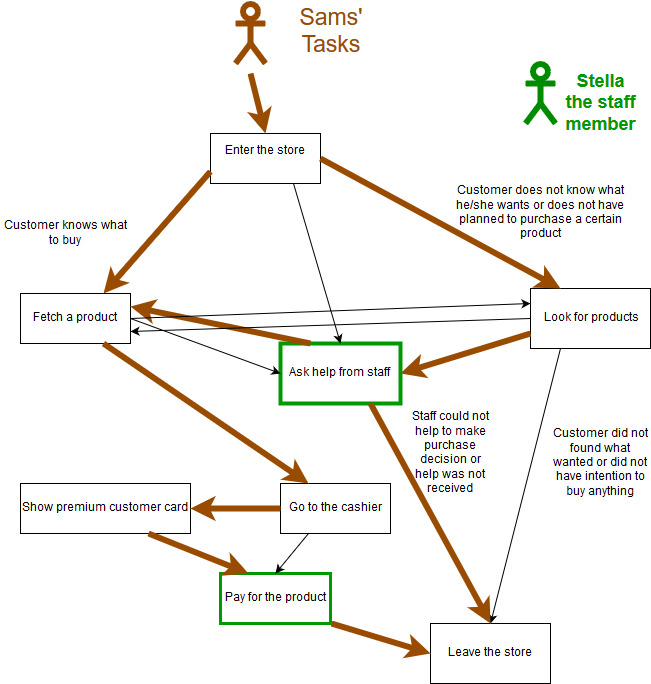
Scenarios:
Since we now had a clearer method to model the users, we created a scenario involving the personas to model the problems they faced in a holistic manner.
Using this, we then suggested alternative situations that could prevent this problematic scenario from occuring and leaving customers more satisfied.
Scenarios with problems and suggestions
Final pitch to present findings and recommendations (slide deck below )
The Outcome:
Using these methods, we were able to recommend a potential solution that could solve the issues of the key user groups identified in the process. An automated pickup service could work well for regular customers who already know what they are buying and could place an order to self-pickup at the store before they head off on their commute. This would in-turn give the staff that chance to take care of other customers who need assistance during the rush hour timings.

